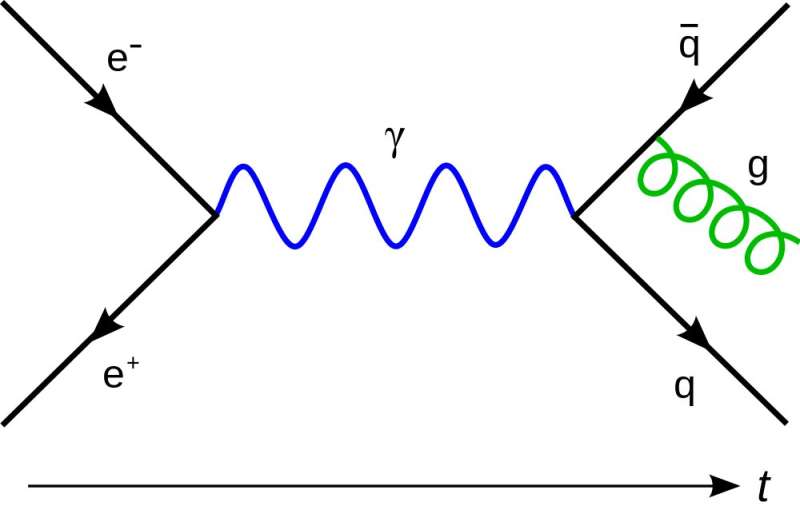Researchers discuss the probability of finding a gluon inside the pion

Researchers from NC State University have determined the probability of finding a gluon inside the pion. The Abstract sat down with graduate student and lead author Patrick Barry and his research advisor Chueng Ji, professor of physics at NC State, to talk about what this finding means for our understanding of how the universe works.
THE ABSTRACT (TA): What are gluons and pions? What role do they play in the universe?
BARRY/JI: Gluons and pions are essential ingredients in understanding the stability of the nucleus at the center of the atom. Gluons are the "glue" that bind quarks and anti-quarks inside the proton and neutron, collectively called nucleons, which are the building blocks of all nuclei. Pions mediate interactions between nucleons inside the nucleus, while the pions themselves are also the bound-states of a quark and an anti-quark glued by the gluons. The stability of the nucleus inside the atom is essentially due to the balance of the short-range nuclear forces between nucleons inside the nucleus, and the pions play a crucial role in mediating those short-distance nuclear forces to stabilize the nucleus while gluons play a crucial role in forming nucleons and pions. Without gluons and pions, atoms wouldn't be stable and the universe as we know it likely wouldn't exist.
TA: Prior to this work, had anyone been able to find evidence of gluons inside of pions?
BARRY/JI: Yes, there have been both experimental and theoretical efforts to find the evidence of gluons inside of pions. In particular, the high-energy accelerator at the CERN laboratory conducted pion and nucleon collisions, which provided clear evidence of gluons inside the pion as well as the nucleon.
TA: How do you go about detecting particles that are impossible to see?
BARRY/JI: This is one of the most interesting and crucial questions in nuclear and particle physics. While we can see matter around us easily in the daytime, it is impossible to see things without any light. In the dark night, nevertheless, one may still recognize what's around us by grabbing, touching, etc. Likewise, one uses and/or develops all sorts of various means to detect particles that are impossible to see. Indeed, one of the reasons why high-energy accelerators like the one at CERN are built is to detect particles that are impossible to see. Nowadays, we realize that the portion of visible matter in the universe is less than 5 percent and the rest of the universe is filled with so called dark matter (around 25 percent) and dark energy (around 70 percent) which interact only gravitationally. Scientists need to devise more diverse ways of detecting particles that appear impossible to see in order to explore more deeply the real nature of universe.
TA: Your findings indicate that the gluon carries a substantial amount of the pion's momentum. Why is this important to know, and how will it help particle physicists?
BARRY/JI: Finding how much of the pion's momentum is carried by the gluon is important to understanding the dynamics of gluons. Quarks and anti-quarks inside the pion are glued by gluons so strongly that no individual quark or anti-quark can escape from the pion – which means that no isolated quark or anti-quark can be detected by itself. This gluon confinement mechanism is not yet completely understood. However, researchers are working to simulate the dynamics of gluons and other strong nuclear interactions. The fundamental theory of these interactions is called quantum chromo-dynamics (QCD). Scientists numerically simulate gluon dynamics to understand QCD. That's why knowing the momentum of the gluon inside the pion is important: the total momentum carried by the pion is shared by the quarks, anti-quarks and gluons, collectively called partons. Our findings are important in figuring out the dynamics of momentum-sharing by each parton inside the pion. It helps us understand the true nature of QCD.
TA: What are the next steps for this research?
BARRY/JI: Our next steps for this research are to incorporate more pools of pion data including forthcoming data from nearby Jefferson Laboratory with more in-depth QCD analysis to understand how each parton is distributed inside the pion. Our future research would provide more global QCD analyses to determine each parton's distribution inside the pion as well as the nucleon and even nucleus.
The work appears in Physical Review Letters.
More information: First Monte Carlo Global QCD Analysis of Pion Parton Distributions. Phys. Rev. Lett., Published 10 October 2018. DOI: doi.org/10.1103/PhysRevLett.121.152001
Journal information: Physical Review Letters
Provided by North Carolina State University




















